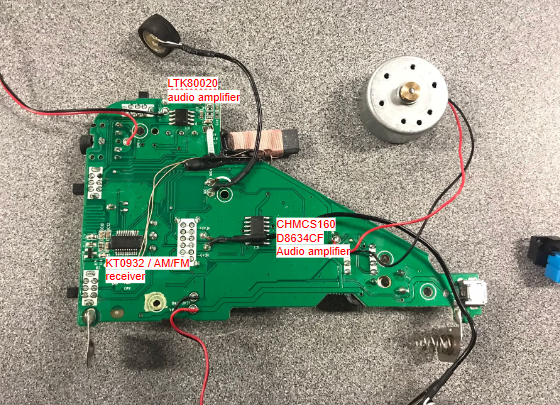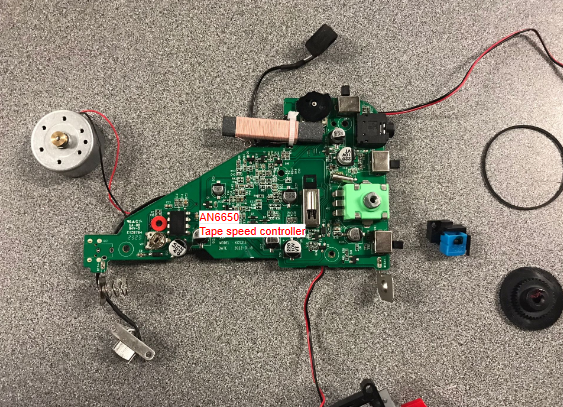Week 13
Wildcard Week
Reverse Engineering
This week I investigated my old walkman
.jpeg)
We conducted a detailed analysis of a partially disassembled Walkman using a CT scanner. The scanner provided us with an in-depth view of each component within the device. For the scanning process, the Walkman was placed on a specialized table designed for CT scanning. To ensure the Walkman remained stable and in the correct position during scanning, we applied a small amount of gel to the table where the device was seated. This process allowed us to thoroughly understand the internal structure and component layout of the Walkman.
.jpeg)
.jpeg)
.jpeg)
.jpeg)
.jpeg)
.jpeg)
After that, we set up the location of the table inside the CT scanner by using the x,y,z coordinates of the interface.
.jpeg)
.jpeg)
.jpeg)
AUpon completing the CT scan of the Walkman, we utilized advanced imaging software to convert the high-resolution cross-sectional images into a comprehensive 3D model. This model was meticulously reconstructed layer by layer, ensuring accurate representation of the Walkman's internal and external structures. The final step involved exporting this detailed 3D model into a .stl (Stereolithography) file format. The .stl file, known for its wide compatibility with various 3D printing and CAD (Computer-Aided Design) software, encapsulates the geometric details of the Walkman, including its surface contours and textures. This file serves as a versatile digital blueprint, enabling potential 3D printing, further analysis, or digital archiving of the Walkman’s design.
.png)

After computer supported process, I went further and tear down the walkman even more.
.jpeg)
We conducted a precise measurement of the potentiometer using a digital multimeter, an essential tool for diagnosing and troubleshooting electronic components. To initiate the measurement, we first set the multimeter to the resistance (ohm) measurement mode, as potentiometers are variable resistors. We then connected the multimeter's probes to the potentiometer's terminals: the red probe to the center (wiper) terminal and the black probe to one of the outer terminals. This connection allowed us to measure the resistance value across these points. As we rotated the potentiometer's knob, we observed the change in resistance on the multimeter's display, which reflects the potentiometer's ability to vary resistance. This process is crucial for ensuring the potentiometer's functionality and for determining its specifications for use in electronic circuits.
.jpeg)
Following the disassembly of the Walkman, I embarked on an in-depth examination of each component on the printed circuit board (PCB) that was exposed. This meticulous investigation revealed several key elements integral to the Walkman's functionality: Dual Audio Amplifiers: I identified two audio amplifier components, crucial for boosting the low-level audio signals to a level suitable for driving the headphones. These amplifiers are responsible for the clarity and volume of the sound output. Tape Speed Controller: A specialized circuit was discovered, designated as the tape speed controller. This component is essential for regulating the playback speed of cassette tapes, ensuring consistent audio quality and speed. AM/FM Radio Module: The PCB also housed a radio module capable of receiving both AM and FM frequencies. This module is a multifaceted component comprising various smaller parts like tuners and demodulators, which enable the Walkman to function as a portable radio receiver. Each of these components was scrutinized for its role and contribution to the overall functionality of the Walkman.
.jpeg)


After completing the examination of the Walkman's components, we proceeded to apply power to its mechanical parts, specifically the capstan and belts, as well as to the tape speed control system. The capstan, a critical component in tape players, is responsible for driving the tape movement at a consistent speed. It works in conjunction with the belts, which transmit the rotational force from the motor to the capstan. By energizing these parts, we were able to test the mechanical integrity and efficiency of the tape movement mechanism. Simultaneously, we focused on the tape speed control circuitry. This involved carefully supplying power to the circuit that regulates the speed of the tape drive. Our objective was to ensure that the tape played at the correct speed, which is crucial for accurate sound reproduction. This step was vital in assessing the operational functionality of the Walkman, particularly in its ability to play cassette tapes with the intended audio fidelity.
To measure the Walkman's audio output, I connected its speaker output to a designated input pin on my PCB. Additionally, I linked the Walkman's ground with my PCB's ground to ensure a stable and clear signal for analysis. This setup allowed me to directly process and evaluate the audio quality from the Walkman.
.jpeg)
